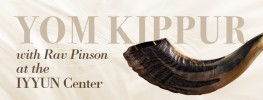Mitzvos operate in a paradoxical manner—they have finite formulas which we must grasp and somehow unite with the Infinite. The mitzvah to put on a talis was given to remind us of all other mitzvos, and it exemplifies this paradox. The talis envelops the person wearing it, reminding us of the Infinite that envelops and overwhelms the finite, and it terminates in precisely tightly knit dangling strings or fringes, the tzitzis, which correspond to the minutia of finite reality.
The word tzitzis is numerically valued at 600. Together with the eight strands and their five knots adds up to 613, the number of mitzvos in the Torah.
Additionally, there are four sets of chuliyos windings, 7, 8, 11, 13. The first set, 7 plus 8, equals 15 and corresponds to the first two letters of the essential four-letter name of God, which we are forbidden to pronounce. The number 11 corresponds to the second two letters of this name, and the number 13 is equal to echad, meaning “one/oneness.”
Essentially, this mitzvah brings out the idea that God’s oneness permeates our total reality, and it serves as a reminder of this truth.
This blessing serves as an opening for the "Verses of Praise" (Pesukei De'Zimra). In the following passages of praise, we tell of the greatness of the Creator and the way He is manifest within creation, with the aim of arousing our emotions.
Read more...Ahavas Olam is a prayer for unity. When we say, "bring us in peace from the four corners of the earth," we gather the four fringes (tzitzit) from the four corners of the prayer shawl (talit).
Read more...








